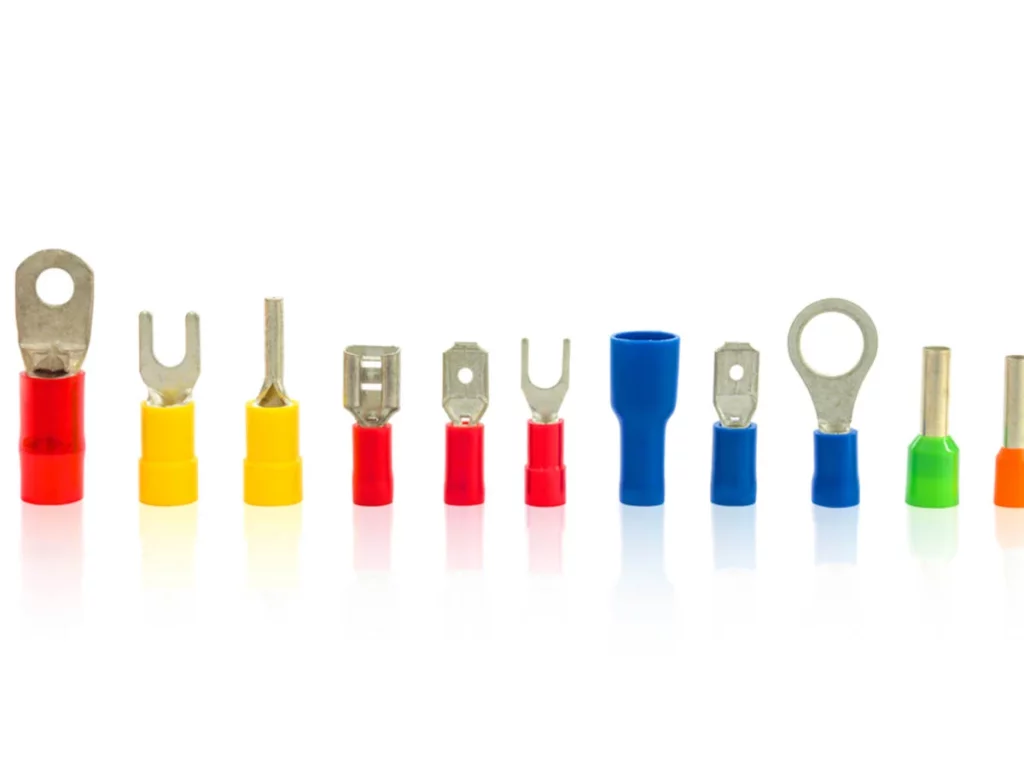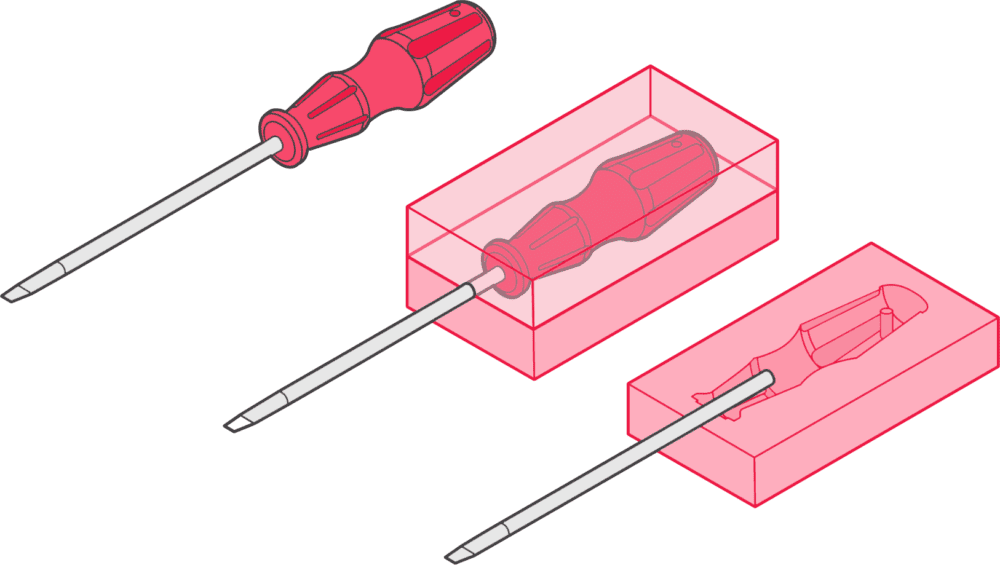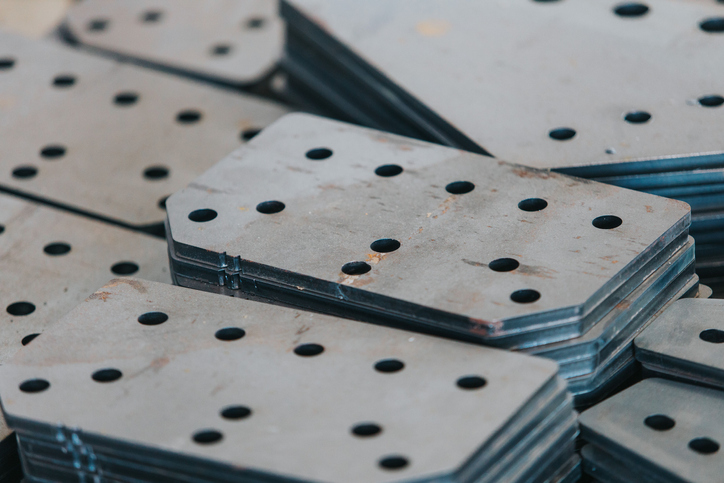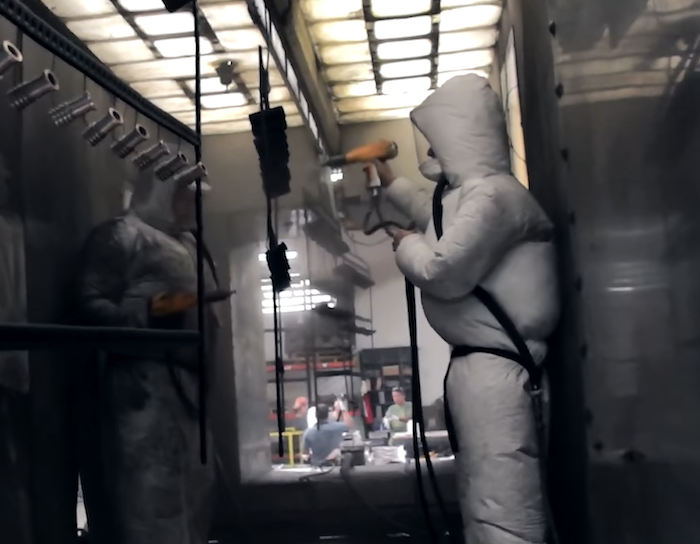Have you ever noticed electrical connectors? They consist of metal pins surrounded by a plastic housing. This product is an example of insert molding, with a pre-made metal part embedded in plastic molding. The process involves the insertion of metal parts into a mold. Molten plastic is injected into the mold, and subsequent cooling and solidification of the plastic produces the finished product. This article reviews the process of insert molding, process considerations, advantages, molding considerations, and common examples of parts.

The Process of Insert Molding
Insert molding is a specialized type of injection molding that manufactures plastic parts with metal inserts. It encapsulates the insert within the plastic, creating a single, integrated part. The inserts can be of various shapes and materials, including screws, pins, or larger-size metal parts. However, the insert should be robust enough to withstand the high injection pressure and temperature.
Furthermore, insert molding leverages the best attributes of both materials by integrating metal components directly into the plastic. The fundamental difference between insert molding and standard injection molding is the introduction of additional insert parts into the mold. Otherwise, the same general process occurs.
Here is the step-wise process of insert molding.
Step 1: Insert Placement
Insert placement is the initial phase of the insert molding process. An operator places the inserts within the mold to establish its intended orientation and position. Insertion can occur manually or automatically.
The manual method could be more precise and suitable for small batch runs. Automatic insertion is the method of choice for large-scale productions.
Step 2: Injection of Molten Plastic
After positioning the inserts, the mold closes, and molten plastic injects into the mold under high pressure. The sprue is the inlet that feeds the molten plastic material from the injection machine nozzle into the mold. The molten plastic then travels from the sprue through the runners to the cavity gate and into the cavity.
Step 3: Cooling and Mold Opening
Next, the insert mold cools. While cooling, the molten plastic solidifies and firmly adheres to the inserts. The liquid plastic replicates the detailed contours of the mold cavity. The mold opens after the desired solidification, revealing the molded part and attached runner.
Step 4: Runner Removal
Removing parts from the runner involves ejection pins that mechanically separate the finished and runner parts. Runners and parts are then manually or automatically removed from the mold.
Step 5: Post-Processing
The process of insert molding concludes with post-processing. The finished part can be inspected or tested for Dimensions, visuals, color/gloss, and structural compliance per customer requirements.
What are the Advantages of Insert Molding?
- Easy Inserts in Plastic Parts: This is the first and foremost advantage. Insert molding allows embedding the external parts inside molding. For example, high-impact resistant plastics can be combined with steel inserts to increase structural integrity.
- Cost-effective: The inserts eliminate or reduce the assembly needed to create the final product, saving the cost.
- Reliable Parts: Insert molded components are inherently more reliable and robust than assembled ones. Assembled parts have a high degree of potential failure and misalignment.
- Flexibility In Design: The inserts on mold cavities can create uniquely shaped parts with complex geometries. Thus, more shape flexibility exists for user comfort and functionality.
- Size and Weight Benefit: This insert molding approach facilitates the transition from metal to plastic parts, resulting in high-strength and lighter components.
- Durable Products: The insert makes a strong bond with plastic upon solidification. Thus, it increases the strength and durability of the final molding product.
The Applications of Insert Molding
This molding method has diverse applications across industries, from automotive components to surgical instruments. But, the insert molding is particularly beneficial when parts require:
- Different electrical or thermal properties
- High shock absorption capacity
- Excellent vibration damping
- Multi-colored appearance
- Comfortable non-stick grip
Thus, insert molding is a wise choice for complex, integrated parts that are lightweight, strong, and aesthetically pleasing, making it an optimal choice for applications across various industries.
What are the Examples of Insert Molding Parts?
| Industry | Parts Examples | Why Choose to Insert Molding? |
| Aerospace | Aircraft seating mechanisms, stowage bin latches, and user interface switches | Reduce weight and enhance durability |
| Automotive | Dash panels, electric sockets, dials, and handles | Improve fuel economy by reducing part weight and increasing design reliability. |
| Medical | Surgical instruments, tube valves, needle hubs, and dental instruments | Precise and complex parts from biocompatible materials. |
| Consumer Electronics | Digital control panels, knobs for appliances, and threaded fasteners | Eliminate the need for fasteners/solders and streamline assembly. |
| Defense | Handheld communication devices, binocular housings, and munitions | Produce cost-effective, efficient, and lightweight military equipment. |
| Industrial | Encapsulated bushings, studs, tubes, and threaded inserts | Enhance strength, reduce assembly time, and improve part functionality. |
What are the Insert Molding Considerations?
Consider several production considerations to optimize the insert molding process. First, choose plastic that meets the functional requirements, including strength, flexibility, and temperature resistance. Additionally, the material flow characteristics significantly affect mold design and the quality of the final product.

Next, mold design should accommodate the part’s geometry, including any undercuts or fine details, while ensuring efficient material flow and cooling. Subsequently, proper tool design is essential to minimize cycle times, reduce defects, and increase mold longevity.
Another consideration for insert molding is processing parameters optimization, such as temperature, pressure, and injection speed. These parameters directly influence the quality of the molded part. It affects dimensional accuracy, surface finish, and the presence of defects.
Is insert molding right for your application? Contact us to discuss your various coating applications.


